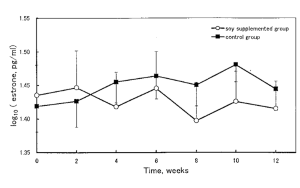University campuses are supposed to be a place where students absorb knowledge, take part in a variety of activities, and enjoy the days before they become a part of competitive society. However, the problems are caused by carrying guns has become the barrier for foreign students to go to America to further their study and also makes parents who want their children to go aboard to America more worried about their safety. Actually, America has a long history on the both side of supporting carrying guns and against carrying guns. The Second Amendment of the United States Constitution (1791) also emphasizes on the right of people to bear arms, “ A well regulated Militia, being necessary to the security of a free State, the right of the people to keep and bear Arms, shall not be infringed.”(Ready, fire, aim). Is it really infringed”(Birnbaum, 2013)

Is it really helped for people’s safety if we carry arms? Clearly, this picture reflects that more guns helped to control crime efficiency. However, should we allow people concealed carry gun on campus? This controversial topic has been argued for a long time. Apparently, allowing carry guns will benefit students who face life threaten. However it will also expose the students who do not have guns life under threaten. We can tell how the debate is from this video.
I come up with some solutions on this problem and I want to illustrate them with real examples. The real example happened in Virginia Tech warned all the educational departments and governments that cannot just focus on student’s academic level, the aspect of student’s mental health is needed to be concerned as important and necessary. According to CNN library, “Cho is ordered by a judge to seek outpatient care after making suicidal remarks to his roommates. He is evaluated at Carilion-St. Alban’s mental health facility” (CNN Library). Besides, according to book wrote by Thomas “ possttraumetic stress”, “ depression”, “anxiety symptoms” are all easy to drive people commit shooting. Actually schools and communities’ psychological mentors should concentrate on the mental health of students due to most of the students who commit shootings suffer from a mental disorder. people commit (Fergus, 2011, p596-600). the students commit shootings suffer from mental mental disorder. If the school can sense the mental problem Seung-Hui Cho had earlier, this tragic event could have been avoided.
The second solution which is local governments or educational departments should organize activities for schools annually, to publicize the knowledge of how students should protect themselves when gun shootings happen. The benefit of this is that students will take the campus shooting problem seriously in their daily life and they can learn how to protect themselves with practice not just in theory. According to Emerson, “The founder and president of Stop Handgun Violence organization John Rosenthal was invited by the Emerson Peace and Social Justice to talk about his participation in civil disobedience movements, the lack of legislative regulation for the gun industry, and the need to make stricter gun regulation advocacy a priority on campus” (Gun control, Laura).
Third, educational departments together with governments could make specific policies and procedures on the regulation of guns such as installing metal detectors or surveillance and punish the internal or external people who carry or use guns improperly on campuses. This solution is better than the above two because this time the solution real focus on how to deal with “weapon” instead of “human”. The first solution tries to solve the problem by cure violence’s mental disorder. It is good, but it is limited by it’s indirectly. The second try to solve the problem through spread knowledge on how to protect themselves to students and faculties and organize acting if the real shootings come. The disadvantage is that people who carry dark motive may use these free chances to learn how to break students’ prevention and hurt people with guns. By contrast, the third solution answers the question of guns control on campuses best. Although it does have disadvantage which is it may cost schools a lot finance budget to install facilities and it also takes schools much time on policies making and ratify by the superior departments. However, there is a real example exit on put this solution into practice. According to the journal When Guns Come to Campus, Security and Culture Can Get Complicated, the author gives some examples, “Arkansas allows faculty and staff members to carry concealed weapons and Idaho prohibits guns idormitories or venues that hold more than 1000 people.”(Bowerman, 2014, p13). Strict policies are needed as in dormitories or venues that hold more than one thousand people.” Texas is a state which is famous for supporting guns carry. It is one of the seven states which allow concealed-carry guns on campuses. In order to make sure the safety of students and facility, it also put so much money on the prevention.
Bascially I think it is never too much to secure the safety. It may cost a lot to install equipments or take a series of complicated steps to make these policies. However, every time after tragic happen people always wish they should have done this before or they should have done that before. Time cannot flush back, and fate does not give everyone a second chance. May be tragedy can be sever as a reminder for all families to side aside a few minutes to talk together about the importance of compassionate acts-that those acts become the glue that binds us together in our humanity” (Khadaroo, 2013). If schools and educational departments do not spend money and time on the aspect of guns regulation, the retribution will come that there will be more campuses shooting shows up in the future. Risks increase in silence and feed on people’s ignore and arrogant. In the future when people read the news about campuses shooting again, schools and educational departments may regret on why not they haven’t perfect the regulations before. However, regret cannot bring lives back to life, mourning and remembering is far from enough. If schools and departments do not make any improvement and do not learn a lesson from tragedy that means they scarify their lives for nothing. It is not fair. Schools cannot predict precisely on who and when and will commit shootings on campuses, but they can prevent it by stem secure loopholes constantly. Money cannot bring dead to life, but it can help to prevent the tragedy coming. It is worth to spend money on the aspect of protect human safety.
In conclusion, education departments should form proper regulations and procedures on carrying guns on campuses. Combine with concentrating on students’ mental health and organize the activities to enlarge the knowledge of how to keep safe when shootings happen together. The problem of guns control on America campuses will be solved sooner or later.
Last if you are interest in the gun policy on campus in each states of USA. Please click here. This website has rich content on this aspect.
References
Bowerman, M. (2014). When Guns Come to Campus, Security and Culture Can Get Complicated.
http://files.eric.ed.gov/fulltext/ED537905.p), 13. Rehttp://files.eric.ed.gov/fulltext/ED537905.pdBirnbaum, R. (2013). Ready, Fire, Aim: The College Campus Gun Fight. http://files.eric.ed.gov/fulltext/ED537905.pdhttp://files.eric.ed.gov/fulltext/ED537905.pd(5), 6-14. RetrievedGaughy Mc Lauren. (2015). Campus Carry Would Cost Millions in Security Upgrades. Retrieved from Alaska Dispatch News web http://www.adn.com/article/20150224/campus-carry-would-cost-millions-security-upgrades
Gomez, Laura. (2013). Gun control activist Rosenthal speaks to Emerson students, urges social action. Retrieved from Emerson http://www.boston.com/yourcampus/news/emerson/2013/04/gun_control_activist_rosenthal_speaks_to_emerson_students_urges_social_action.html
Virginia Tech Shootings Fast Facts. (2015). Retrieved from CNN library http://edition.cnn.com/2013/10/31/us/virginia-tech-shootings-fast-facts/index.html















 e board the emotions happy, sad, surprise, fear, anger and disgust were constant amongst the population. In another study Ekman conducted he showed stress inducing videos to American and Japanese college students once by themselves and then again with someone in the room asking questions. This study was constructed to see if the emotions were constant across culture. To avoid the confounding variable of “learned recognition” and response to popular media, Ekman conducted this study in New Guinea, where individuals had no connection with the outside world. The tests had to be modified slightly due to the language barrier and varying social norms, but this test also held with Ekman’s hypothesis that Emotions are constant among all humans. Due to Ekman’s thorough investigation, attention to potential third variables, and large sample size he was able to show that facial expressions are constant across humanity.
e board the emotions happy, sad, surprise, fear, anger and disgust were constant amongst the population. In another study Ekman conducted he showed stress inducing videos to American and Japanese college students once by themselves and then again with someone in the room asking questions. This study was constructed to see if the emotions were constant across culture. To avoid the confounding variable of “learned recognition” and response to popular media, Ekman conducted this study in New Guinea, where individuals had no connection with the outside world. The tests had to be modified slightly due to the language barrier and varying social norms, but this test also held with Ekman’s hypothesis that Emotions are constant among all humans. Due to Ekman’s thorough investigation, attention to potential third variables, and large sample size he was able to show that facial expressions are constant across humanity.
































 GMO’s, or Genetically Modified Organisms, are a growing and very common occurrence in today’s world. These are plants and animals that have new genes put in or are breed with other plants to create a whole new plant. They are something of a marvel in modern science and they can help create a whole new world. However, a number of people are scared of GMO’s but should they?
GMO’s, or Genetically Modified Organisms, are a growing and very common occurrence in today’s world. These are plants and animals that have new genes put in or are breed with other plants to create a whole new plant. They are something of a marvel in modern science and they can help create a whole new world. However, a number of people are scared of GMO’s but should they?